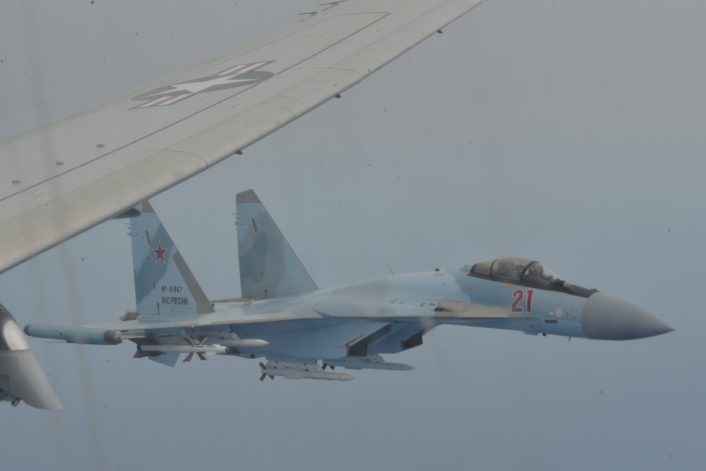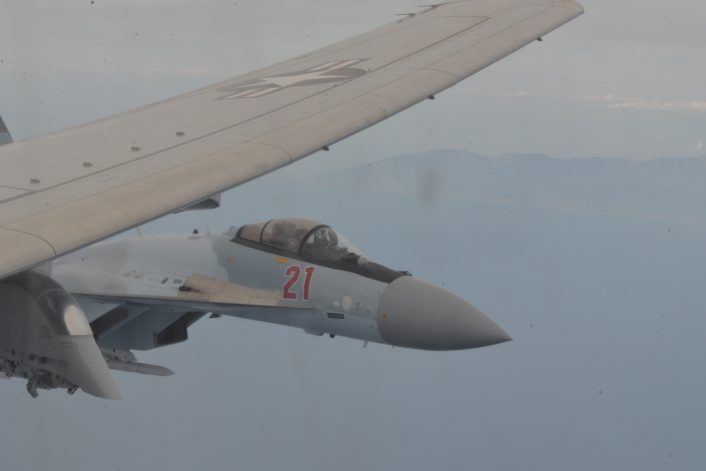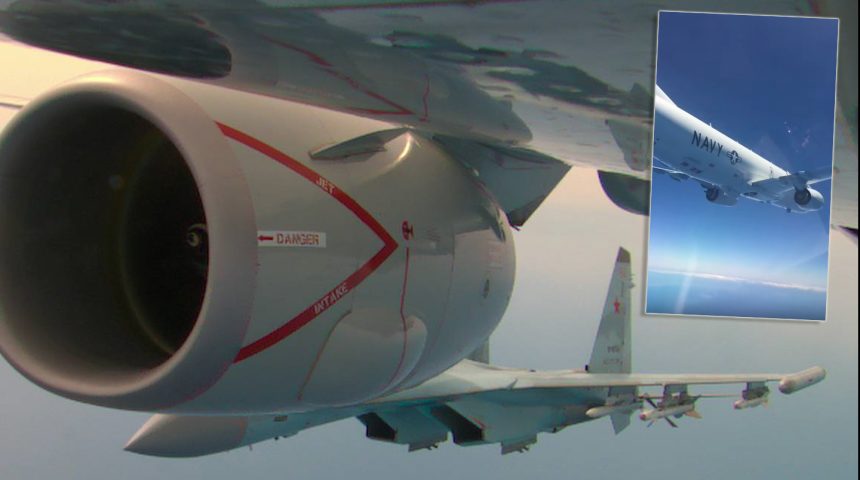While the 6th Fleet has released footage and shots taken from the P-8s, there’s now a clip filmed from the cockpit of a Russian fighter jet.
It’s not the first time and it won’t probably be the last one. In the latest chapter of the Russian “unprofessional” and “unsafe” intercepts saga, the U.S. 6th Fleet reported that “For the third time in two months, Russian pilots flew in an unsafe and unprofessional manner while intercepting a U.S. Navy P-8A Maritime Patrol and Reconnaissance Aircraft in the U.S. 6th Fleet, May 26, 2020.”
According to the U.S. Navy, the surveillance aircraft was flying over the Eastern Mediterranea Sea over international waters, when it was intercepted by two Russian Su-35. The intercept lasted over 65 minutes, meaning that the American MPA (Maritime Patrol Aircraft) with ISR (Intelligence Surveillance and Reconnaissance) capabilities was probably flying close to the coast, most probably off Syria, where the P-8 is often tracked.
“The intercept was determined to be unsafe and unprofessional due to the Russian pilots taking close station on each wing of the P-8A simultaneously, restricting the P-8A’s ability to safely maneuver. The unnecessary actions of the Russian Su-35 pilots were inconsistent with good airmanship and international flight rules, and jeopardized the safety of flight of both aircraft.
While the Russian aircraft was operating in international airspace, this interaction was irresponsible. We expect them to operate within international standards set to ensure safety and to prevent incidents, including the 1972 Agreement for the Prevention of Incidents On and Over the High Seas (INCSEA). Actions like these increase the potential for midair collisions.
This incident follows two unsafe interactions in April, over the same waters. In all cases, the U.S. aircraft were operating in international airspace, consistent with international law, with due regard for safety of flight, and did not provoke this Russian activity.”
Indeed, although the lens zoom can affect the way we perceive the distances, the images and clips taken from the P-8 show the Russian interceptors quite close to the U.S. aircraft.
Interestingly, there’s also a video showing one of the intercepts, from the other side, i.e. from the cockpit of a Russian jet (H/T Alex Snow for sharing this):
More interesting than the distance between the aircraft, is the loadout of the Su-35s that can be seen in the photos:

The Su-35s appear to carry R-27TE, R-77, R-73 and Sorbtsiya L-005 ECM pods.

Once again, it’s worth remembering what a former RC-135 aircraft commander who flew the S, U, V, W, and X models, commenting the intercepts, once told us “what passes for dangerous and provocative today was ho-hum to recon crews of my generation (although we weren’t shot at like the early fliers from 1950-1960).” Moreover, back in the days, some “stunts” were performed at the request of the intercepted aircraft….
Each time I read of a “dangerous intercept”, this article I wrote few years ago comes to my mind:
“We Did Barrel Rolls Around Tu-95s At The Request Of The Soviets”: F-4 WSO Explains The Story Of The Phantom Upside Down Near Bear”: https://t.co/UaLwbZR0Ci
— David Cenciotti (@cencio4) April 16, 2020
Anyway, for the records, before yesterday, another unsafe intercept was reported on Apr. 15, 2020, when a U.S. Navy P-8A Poseidon aircraft flying in international airspace over the eastern Mediterranean Sea was intercepted by a Russian Su-35 that conducted a high-speed, inverted maneuver, 25 ft. directly in front of the mission aircraft, “which put our pilots and crew at risk [because of wake turbulence]” as the USN claimed.
Therefore, as explained at the beginning of this article, it was not the first time nor will it be the last.









